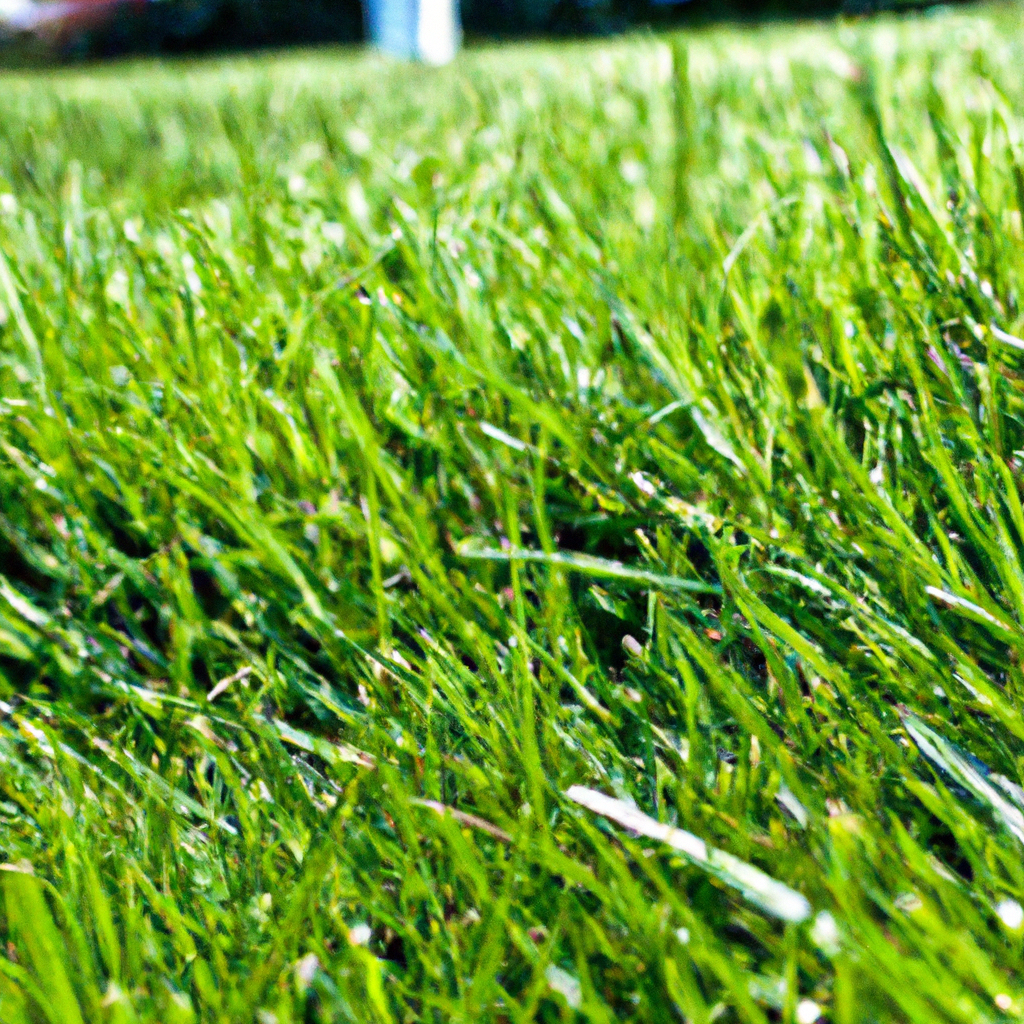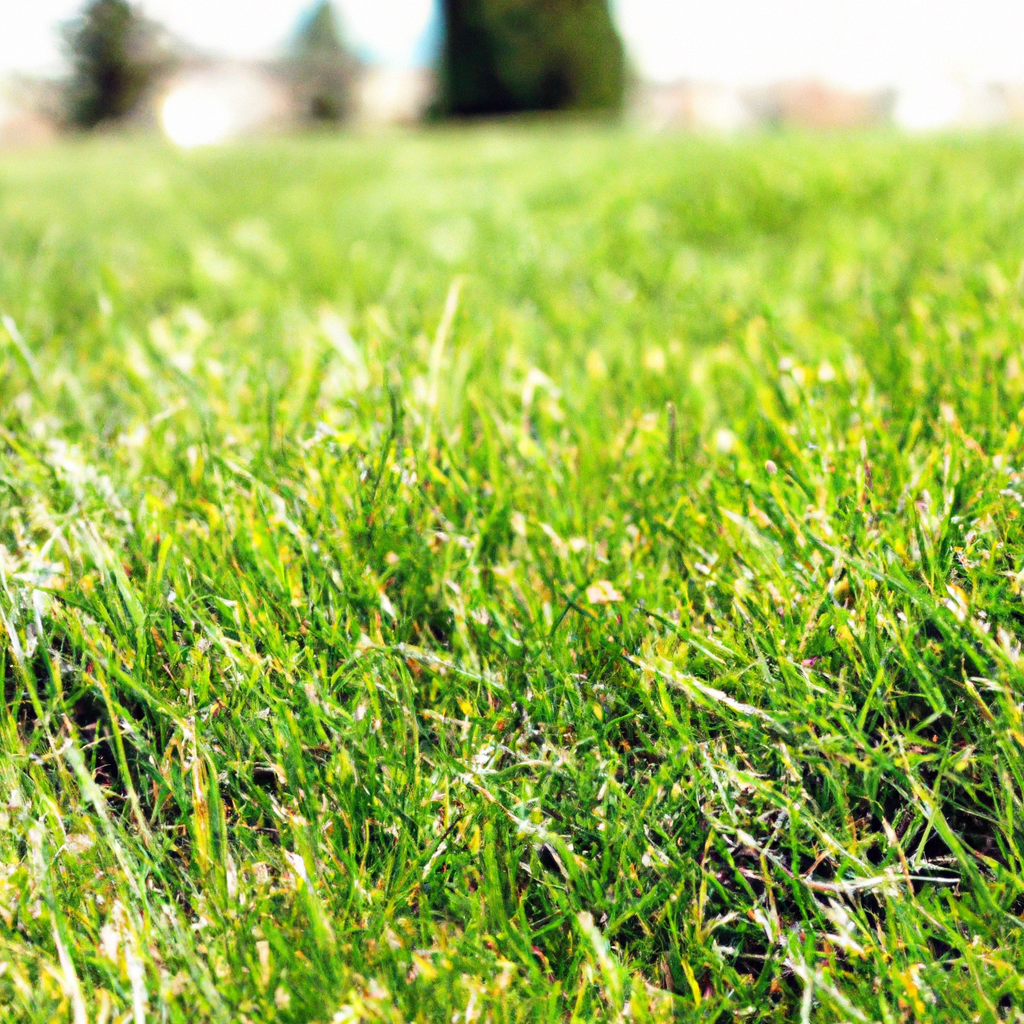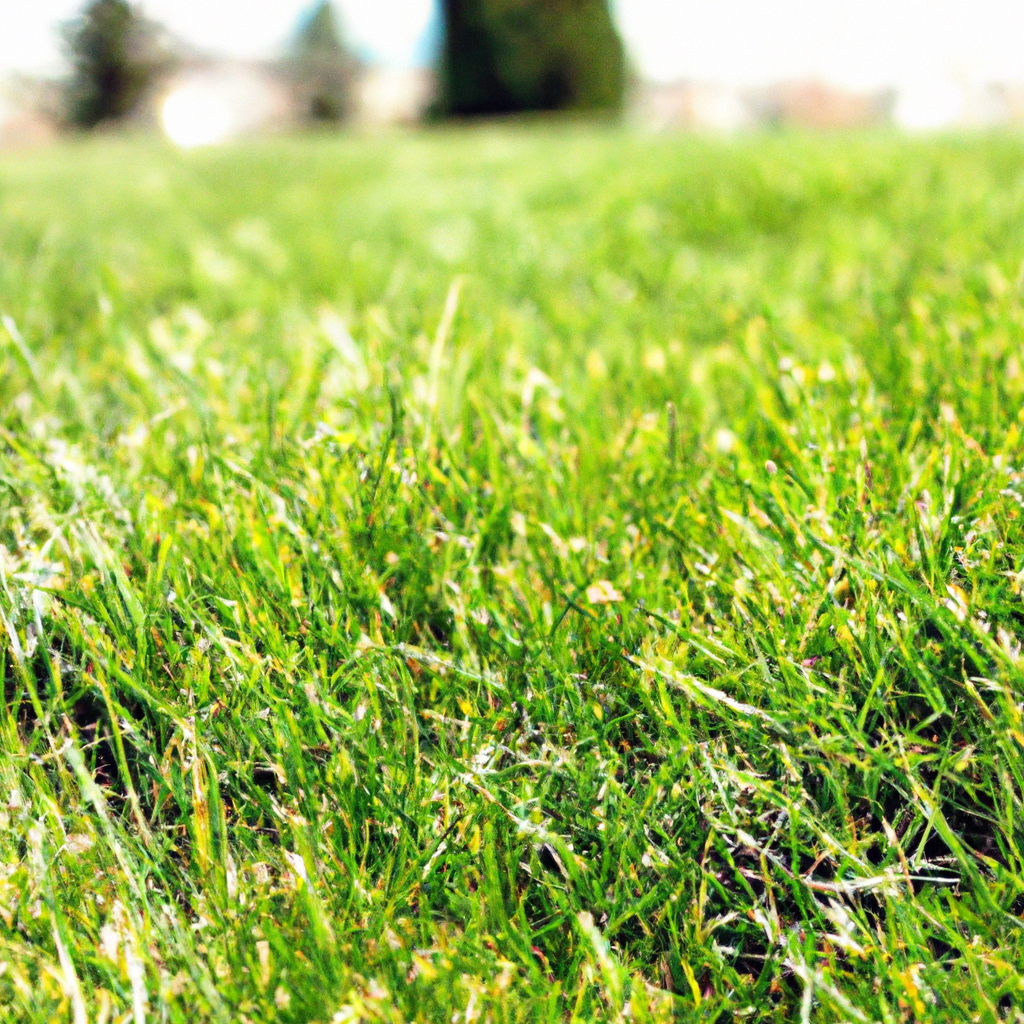Imagine having a beautiful, vibrant green lawn that is the envy of your neighbors. If you’re looking for a natural and effective way to achieve this, then look no further than humic acid. Derived from organic matter, humic acid is a powerful tool for lawn care that offers numerous benefits. From enhancing nutrient absorption to improving soil structure, using humic acid can drastically transform your lawn into a lush paradise. In this article, we will explore the various advantages of incorporating humic acid into your lawn care routine, providing you with all the information you need to achieve that perfect green lawn you’ve always dreamed of.
What is Humic Acid?
Definition
Humic acid is a natural organic substance that is derived from decayed organic matter, such as decomposed plant and animal material. It is a key component of humus, which is the dark, organic material that gives soil its rich, fertile characteristics.
Composition
Humic acid is composed of a complex mixture of organic compounds, including fulvic acid and humin. Fulvic acid is a smaller molecular size and more soluble, while humin has a larger molecular size and is less soluble. Together, these compounds work synergistically to provide numerous benefits to the soil and plants.
Sources
Humic acid can be found naturally in soil and peat. It is also commonly extracted from ancient deposits of decomposed organic matter, known as Leonardite or lignite. These deposits are typically found in areas that were once covered by ancient swamps or bogs. The humic acid is then extracted and processed into various forms for use in agriculture and lawn care.
The Role of Humic Acid in Lawn Care
Enhancing Nutrient Uptake
Humic acid plays a vital role in enhancing nutrient uptake by plants. It acts as a chelating agent, meaning it binds with essential nutrients in the soil, making them more available for uptake by plant roots. This improves the efficiency of nutrient absorption and allows plants to take up more nutrients, leading to healthier and more vigorous growth.
Improving Soil Structure
One of the key benefits of humic acid is its ability to improve soil structure. When applied to the soil, it helps to break down compacted clay particles, allowing for improved drainage and aeration. This creates a healthier root environment, as well as promotes the growth of beneficial soil microorganisms. Improved soil structure also helps to prevent soil erosion and runoff, keeping the lawn healthy and intact.
Reducing Water Requirements
Humic acid has the ability to retain moisture in the soil, reducing the need for frequent watering. It acts as a natural soil conditioner, increasing the soil’s water holding capacity and reducing water loss through evaporation. This not only conserves water but also helps to maintain optimal moisture levels in the soil, promoting healthy root growth and overall lawn health.

Advantages of Using Humic Acid for a Green Lawn
Increased Root Growth
When humic acid is applied to the lawn, it stimulates root growth and development. The improved soil structure and enhanced nutrient uptake provided by humic acid encourage the formation of a strong and extensive root system. This allows the grass to access deeper water and nutrients, resulting in a healthier, more resilient lawn.
Enhanced Nutrient Retention
Humic acid helps to prevent nutrient leaching by binding nutrients in the soil, making them less prone to wash away with rainfall or irrigation. This ensures that the lawn receives a constant supply of essential nutrients, reducing the need for frequent fertilization. The enhanced nutrient retention provided by humic acid also reduces the risk of nutrient runoff, which can have negative environmental impacts.
Improved Soil Aeration
Humic acid helps to create a well-aerated soil environment, which is crucial for healthy root growth. It improves soil structure, allowing for better airflow and gas exchange in the root zone. This promotes the growth of beneficial soil microorganisms, which play a key role in nutrient cycling and overall soil health. Improved soil aeration also helps to prevent the accumulation of harmful gases, such as carbon dioxide, which can inhibit root growth.
Effects of Humic Acid on Lawn Appearance
Richer Color
Using humic acid for lawn care can greatly enhance the color and vibrancy of the grass. The improved nutrient uptake and enhanced soil structure provided by humic acid ensure that the grass receives an ample supply of essential nutrients and water. This leads to healthier and more vigorous growth, resulting in a lush, green lawn with a rich and vibrant color.
Thicker Turf
Humic acid promotes the development of a denser and thicker turf. The increased root growth and improved soil structure provided by humic acid contribute to the overall density and thickness of the grass. This not only enhances the aesthetic appeal of the lawn but also helps to prevent weed growth and the encroachment of other undesirable plants.
Reduced Weed Growth
One of the benefits of using humic acid for lawn care is its ability to suppress weed growth. The improved nutrient uptake and thicker turf resulting from the application of humic acid creates a more competitive environment for weeds. As the grass becomes healthier and denser, it is better able to outcompete weeds for resources, such as sunlight, water, and nutrients. This leads to a reduction in the number and spread of weeds in the lawn.

Environmental Benefits of Humic Acid
Eco-Friendly Option
Humic acid is a natural and eco-friendly option for lawn care. It is derived from organic materials, making it safe for the environment and non-toxic to humans and animals. When used as directed, humic acid poses minimal risk to water sources and does not contribute to air pollution or soil degradation. This makes it an excellent choice for those who prioritize environmentally friendly lawn care practices.
Reduced Chemical Dependency
By using humic acid for lawn care, it is possible to reduce the dependency on synthetic chemical fertilizers and pesticides. The improved nutrient retention and weed suppression provided by humic acid can significantly reduce the need for additional inputs. This not only benefits the environment but also reduces costs and minimizes potential negative health impacts associated with the use of chemical lawn care products.
Preservation of Soil Microorganisms
Humic acid promotes the growth and activity of beneficial soil microorganisms. These microorganisms play a crucial role in maintaining soil health and fertility. By enhancing the soil environment and providing a food source for microorganisms, humic acid helps to support and preserve these beneficial organisms. This leads to increased biodiversity in the soil and the overall resilience of the ecosystem.
How to Apply Humic Acid for Lawn Care
Dosage and Frequency
The recommended dosage of humic acid for lawn care varies depending on the specific product and the condition of the lawn. It is important to read and follow the instructions provided by the manufacturer. In general, humic acid can be applied every 4-6 weeks during the growing season, with a yearly application in the fall to improve winter hardiness.
Application Methods
Humic acid can be applied to the lawn using different methods, such as granular application, liquid spray, or as part of a fertilizer blend. Granular application involves spreading the humic acid granules evenly across the lawn and then watering them in. Liquid sprays can be applied using a sprayer or hose-end attachment, while fertilizer blends containing humic acid can be applied using a spreader or similar equipment.
Combining with Other Lawn Products
Humic acid can be used in conjunction with other lawn care products, such as fertilizers and soil amendments. It can be applied before or alongside fertilizer applications to enhance nutrient uptake and retention. Humic acid can also be combined with other soil amendments, such as compost or organic matter, to further improve soil structure and fertility. It is important to follow the specific instructions for each product and avoid over-application.

Choosing the Right Humic Acid Product
Quality and Purity
When choosing a humic acid product for lawn care, it is important to consider the quality and purity of the product. Look for products that have been tested and certified for their humic acid content. High-quality humic acid products should have a high concentration of humic acid and minimal impurities. It is also beneficial to choose products that are derived from sustainable and environmentally responsible sources.
Concentration Levels
Humic acid products vary in their concentration levels. The concentration of humic acid in a product can range from 5% to 90% or more. Higher concentrations of humic acid may be more potent and require lower application rates compared to products with lower concentrations. Consider the specific needs of your lawn and the recommended dosage guidelines when selecting a product with the appropriate concentration level.
Compatibility with Other Lawn Care Products
Before using a humic acid product, it is important to ensure its compatibility with other lawn care products you may be using. Some products may not be compatible when mixed together, leading to negative interactions or reduced effectiveness. It is recommended to read the labels and instructions of all products being used and consult with a lawn care professional if you have any concerns or questions.
Considerations and Precautions
Local Regulations
Before using humic acid or any other lawn care product, it is essential to be familiar with and comply with local regulations and restrictions. Some areas may have specific guidelines or limitations on the use of certain products, including humic acid. Familiarize yourself with any requirements or restrictions imposed by your local government or homeowner’s association to ensure responsible and legal use of these products.
Effects on pH Levels
Humic acid can have some influence on soil pH levels. While it is generally considered pH-neutral, some products may have a slightly acidic effect on the soil. Regular soil testing is recommended to monitor and adjust the pH levels as needed to ensure optimal growing conditions for your lawn. It is advisable to consult with a soil testing service or a lawn care professional for accurate pH assessment and guidance.
Potential for Staining
Humic acid, especially in liquid form, can have a dark color and may potentially stain surfaces such as clothing, concrete, or outdoor furniture. It is important to take precautions when handling and applying humic acid products to minimize the risk of staining. Use protective gloves and clothing, and avoid applying the product on windy days to prevent drift and accidental staining of nearby surfaces.

Case Studies: Success Stories of Humic Acid Use
Residential Lawns
Many homeowners have reported positive results after incorporating humic acid into their lawn care routine. They have observed improved grass growth, increased color vibrancy, and improved resistance to drought and disease. By using humic acid, homeowners have been able to achieve healthier and more attractive lawns, enhancing their overall outdoor spaces.
Parks and Sports Fields
Humic acid has also been successfully used in the maintenance of parks and sports fields. The improved soil structure and increased root growth provided by humic acid have resulted in denser turf, better playability, and improved aesthetics. Parks and sports fields treated with humic acid have shown better resistance to heavy foot traffic and better recovery from wear and tear.
Golf Courses
Golf courses, known for their meticulous turf management, have also seen the benefits of incorporating humic acid into their maintenance programs. Humic acid has been used to improve the soil health and playability of golf course fairways, greens, and tees. The enhanced root growth and nutrient uptake provided by humic acid have helped golf courses maintain consistent and high-quality playing surfaces, even under challenging conditions.
Conclusion
Humic acid is a valuable tool in promoting a lush and green lawn. Its numerous benefits, including enhanced nutrient uptake, improved soil structure, and reduced water requirements, make it an ideal choice for environmentally conscious homeowners and lawn care professionals. By choosing the right humic acid product, following proper application methods, and considering any relevant factors and precautions, you can enjoy the many advantages of using humic acid for a vibrant and healthy lawn. Start incorporating humic acid into your lawn care routine today and discover the transformative effects it can have on your landscaping efforts.

